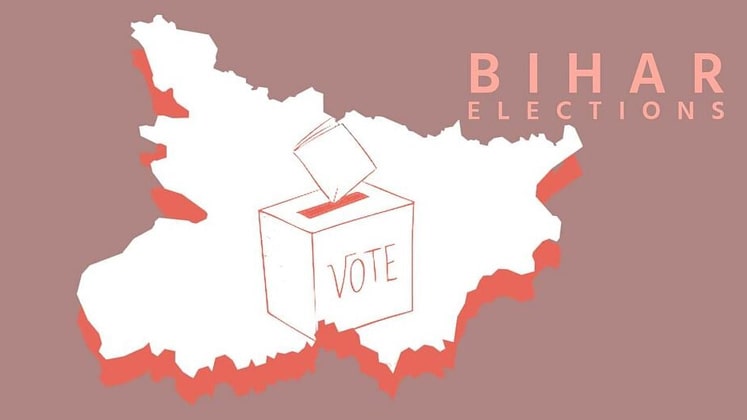
Three years ago, there was a lot of discussion and movement of Bihar’s senior Government officials and few Punjab’s apparel exporters, as both sides were working to start garment industry in Bihar. At that time, it was being highlighted that apparel manufacturing and allied industry like processing and knitting from Punjab would invest nearly Rs. 500 crore in a cluster form. S. Siddharth, Principal Secretary (Industries), Bihar, had said that nearly 16 apparel manufacturers would invest in Bihar and this initiative was expected to create 20,000 to 22,000 jobs. But nothing happened and not even a single company has invested there.
Now, entire India has been eyeing the upcoming Bihar election, as it has many interesting aspects related to Indian politics and allied factors, especially with the focus of the leading political parties being offering millions of jobs. And to create huge jobs, no industry can be better than apparel manufacturing. But sadly, once again, the apparel industry has not been the focal point for anyone in the state.
Not that the State Government has not offered subsidies or facilities like other states; Bihar Government has announced several perks and benefits such as land registration exemption and an additional grant of 10 per cent interest on bank loans, 100 per cent refund on SGST (State Goods and Services Tax), 50 per cent assistance on the amount payable towards EPF and ESI and a skill development subsidy of Rs. 20,000 per employee. The Government has even earmarked 115 acres of land for setting up an apparel and textile park near the capital Patna. Bihar is also home to skilled workforce, as the majority of factories in metro cities or established hubs are dependent on the workers of Bihar.
The state has basic training infrastructure. In fact, this training focus has been there for the last decade, as in 2012, the leading textile company Raymond Ltd. started a training centre in Patna with the support of the State Government to impart tailoring skills to underprivileged youth and tailors. NIFT Patna has also been active since 2012 and it offers UG, PG as well as continuous education (CE) programmes. Two years back, Bihta (Patna) also got the Footwear Design and Development Institute (FDDI). The event for the training of worker level, Apparel Training & Design Centre (ATDC) has its seven training centres across the state.
Also Read: Skilift Consulting: Passionate for training, motivated to serve the industry!
Udyog Mitra, part of Department of Industries, Bihar, claimed that the textile sector is of high priority for Bihar, and apart from weaving, knitting and stitching, the state also has opportunities for products based on banana fibre, leather, artificial leather and leather substitute material.
There were few good initiatives taken recently by the State Government like skill mapping was done for around 2 million workers who returned during lockdown (including all industries). Bihar Government has gone one step ahead, as along with skill assessment, it also planned to make SHGs (Self Help Groups), which will enable a group of workers to start a small unit.
In some districts of the state, under State Government-supported scheme called District Industrial Innovation Scheme, a very small textile cluster was started in recent few months and workers are happy to work in their hometown. To mention a few, in Teghra of Begusarai, workers (who came back to their hometown) have started manufacturing products like masks and bags. Bag manufacturing has started in the Ramzanpur region of the same district.
Cost of government land, minimum wages and overall cost of living in Bihar are much lower than any established textile or apparel hub of India. Logistically, Patna has proximity with Kolkata for seaport connectivity, as it has a distance of around 600 km. The state has political stability also. Even air connectivity of the state capital is reasonably better than the national capital and other established hubs of India.
Despite all such developments and initiatives, why has the apparel manufacturing industry not even incubated in Bihar? There are many reasons for the same like the industry has already selected other states where textile players seem more comfortable, overall subsidies, allied support or overall push. The State Government has remained unsuccessful to bring even a single giant who can attract or motivate other companies. For example, Orient Craft was the flag bearer to start the industry in Jharkhand, and Shahi Exports came forward in Odisha. Even the water quality of Bihar is good enough for processing, but as this segment needs huge investment, players of the same are not much enthusiastic.
Also Read: Survival strategies by consultants to support apparel manufacturers
“Bihar has never focused on this sector as a potential win-win segment, and that is why over the years, the apparel industry has never found a prominent place in the industrial policy framework. There were hopes when certain industries did make attempt for settling up their units here, but the lacklustre support took them to neighbouring states. Those who have tried to come and set up their units have left, leaving behind negative footprints which also contributes to Bihar not being in the choice of the new and old entrepreneurs,” said Sanjay Shrivastava, Director, NIFT Patna.
He also added that on one side, we have seen serious efforts made by the Government to bring in the apparel industry to Bihar, but on the other hand, frequent changes at the top most levels monitoring this segment are also a huge contribution to why there has also been a serious shift of focus in these industries.
Change in top leadership’s attitude is also a must; Nitish Kumar, CM of Bihar, has been saying for the last 15 years that most of the industries prefer a state where there is port and sea, while Bihar is a landlocked state. This is wrong as Haryana, Punjab, Rajasthan and Delhi-NCR have a variety of industries (including textile and apparel) developed very well, and all these are also landlocked states. Even ambitious promises of 1 million government jobs, 1.9 million government as well as private jobs by leading political parties are majorly focused on government jobs rather than industrial development or to create jobs in the industry.
One of the leading political parties has promised in its election manifesto to make IT hub in Bihar and create half a million jobs in next 5 years through the same. Why can’t these politicians see ample opportunities in garment manufacturing in Bihar?
The irony is that rather than developing new industries and creating jobs, even small or medium factories there are facing challenges to grow. Bhagalpur is globally known for its silk, but overall textile units in this district are also not doing well like Bihar Spun Mill closed in 1995. Women in the same district are struggling to get equipment for manufacturing of sanitary pads.
Through last month (September 2020), the Government came forward to start Bhagalpur smart silk city, and the land has been allocated for the same. It is supposed to benefit weavers at a large scale, as this project will work on a big textile unit.
Minimum wages, especially of highly skilled workers, also seem to be an issue in the state! As per the state norms, minimum wage starts from Rs. 7,592 for unskilled and goes up to Rs. 11,726 for highly skilled workers. In states like Tamil Nadu and Gujarat, wages for highly skilled workers are comparatively less.
Rajesh Modi of Bihar Garment Association said, “Initially, there was a major issue of infrastructure, as right from electricity to roads, everything was in a bad condition. Now over the years, infrastructure has improved but the execution of Government policy is very poor. Whatever the Government commits at the policy level, don’t deliver at the ground level at all. Due to this, local as well as prospective investors from other states don’t invest in Bihar. And as far as the overall image of Bihar is concerned, it is still not an industry-friendly state – which may take years to change.”
The image of Bihar, in fact ground realities, do need to change in the state and that is completely in the hands of the State Government, as Harish Dua, MD, K. G. Exports, Ludhiana and executive council member of Apparel Export Promotion Council (AEPC), who had plans to invest in Bihar but hasn’t invested yet, told Apparel Resources, “Safety and extortion in Bihar are big issues which kept us away from it. We had raised the issue with the senior officials who came to Ludhiana 3 years ago, but we were not satisfied with their assurance in this regard.” Harish Dua is one of the main apparel exporters of Ludhiana who supported Bihar to attract investment from Punjab. He also raised the point that it is also difficult to attract the main stakeholders of the supply chain/complete manufacturing process like knitting, dyeing, finishing, etc. at a new place. And without this, at least Punjab’s exporters can’t work.
It is not only the garment manufacturers like Harish from other states, but also local entrepreneurs already having factories in Patna who are not happy with the State Government’s overall functioning. “Whatever is announced there by the State Government is only on papers, but not on the ground level. There are plenty of issues at the level of bureaucracy regarding land allotment as we explore the apparel park project. Private land in the state is as costly as in Delhi-NCR,” said Mukesh Kumar Jain, VP, Bihar Chamber of Commerce and Industries. He also has his own apparel production units in Patna. Mukesh also shared that few dishonest entrepreneurs misused various schemes which added problems for all. As per him, transportation facilities are also a challenge in the state.
Sanjay summed it up well, “Setting up of apparel parks with ease of operations has been promised. What needs to be seen is whether the apparel industry at large sees and feels the opportunity being promised. Bihar needs one success story in this segment and I feel it will soon be the new Bengaluru.”
Also Read: It’s time to improve on manufacturing!






